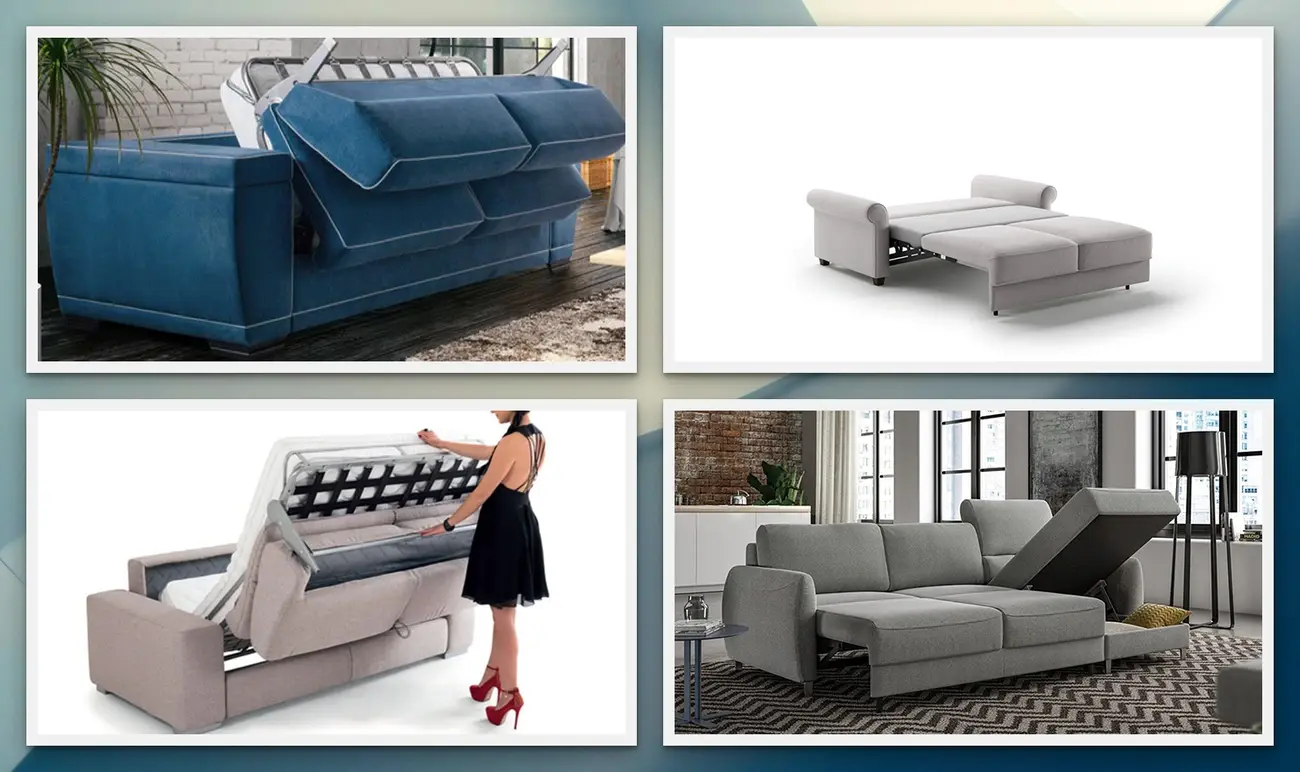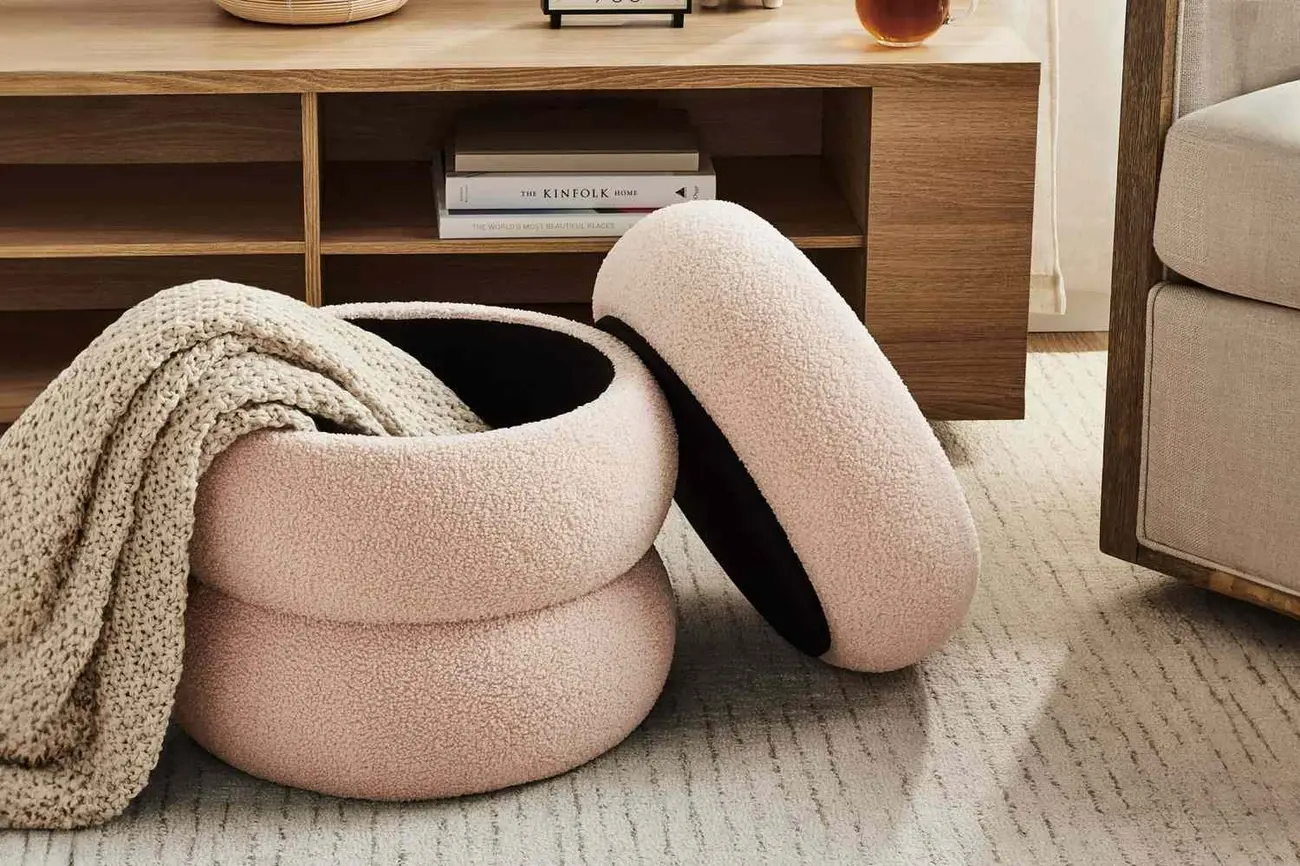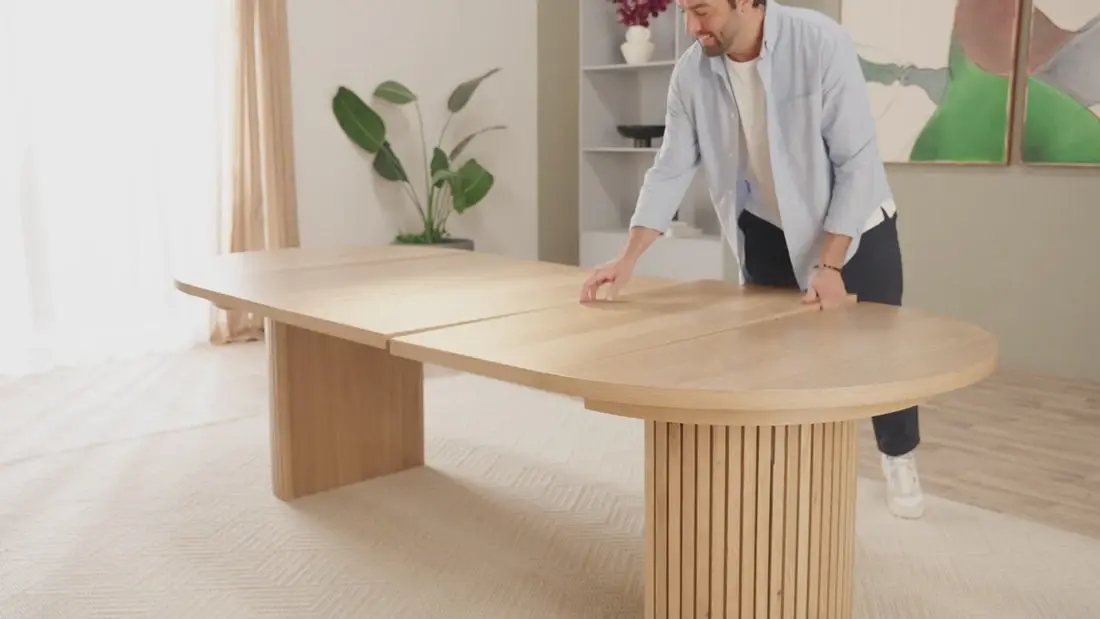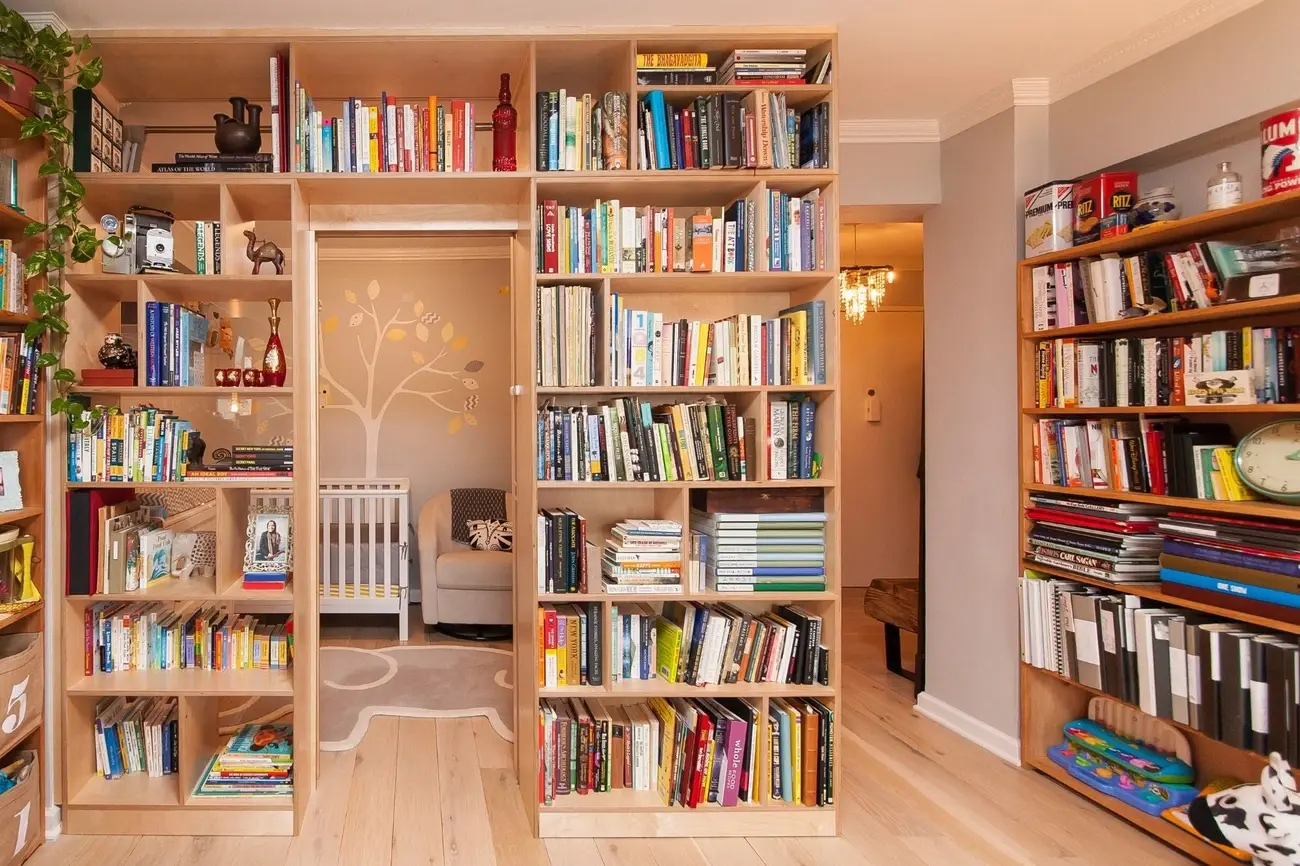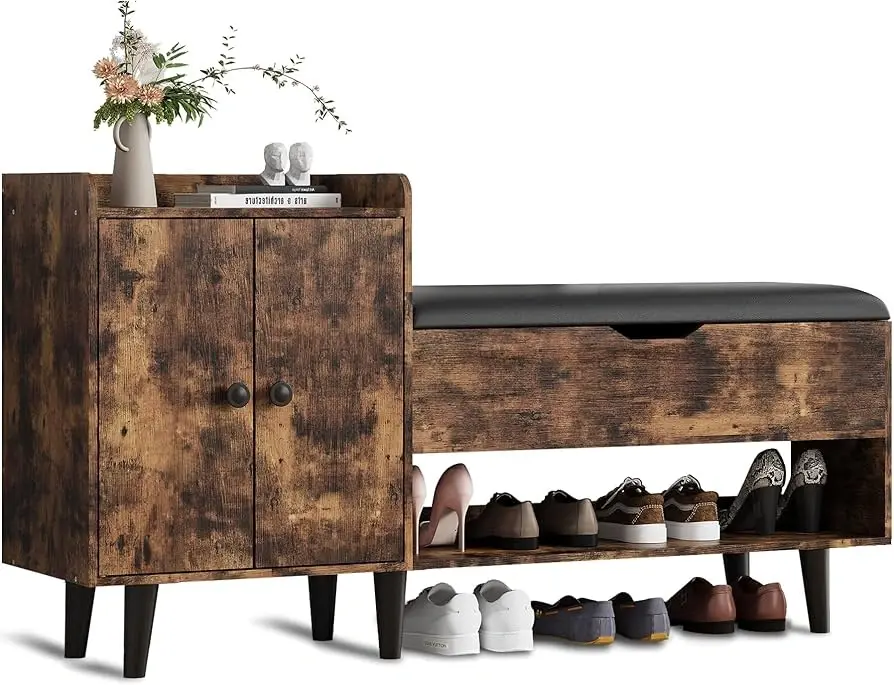Save this article for later
Tired of furniture that serves just one purpose while taking up valuable space in your home? Capsule furniture offers a smart solution for modern living, particularly as we look ahead to 2025's design trends.
Unlike trendy pieces that quickly become outdated, capsule home furniture focuses on quality investments that transition seamlessly between different schemes and spaces. Actually, these versatile items form the backbone of a capsule collection furniture approach that prioritizes functionality without sacrificing style. A classic sofa, for instance, can serve as a staple statement piece for years, while a well-designed chest of drawers works equally well in entryways, living areas, or bedrooms.
Furthermore, today's dining tables no longer just host meals—they've become multi-functional surfaces for everything from breakfast to homework. Meanwhile, strategically placed decorative elements like trays and bowls can add both structure and esthetic appeal to your space. Consequently, investing in these double-duty pieces not only maximizes your square footage but also creates a more cohesive, thoughtful home environment.
Ready to discover the essential pieces that deserve a spot in your home? Let's explore seven capsule furniture items that deliver exceptional versatility for the years ahead.
Convertible Sofa Bed
Source: Sofa Bed
Multifunctional furniture pieces stand at the heart of any smart home design strategy. Convertible sofa beds epitomize this concept, offering an elegant solution to space constraints without compromising on style or comfort. As a cornerstone piece in capsule furniture collections, these versatile items seamlessly transition between daily living and overnight accommodations.
Convertible Sofa Bed Functionality
Convertible sofa beds come in several distinct types, each offering unique benefits for different living situations:
- Pull-Out Sofa Beds: These traditional models contain a hidden mattress that pulls out from within the sofa frame, providing a dedicated sleeping surface separate from the sitting cushions. Pull-out designs typically offer larger sleeping areas and often include higher-quality mattresses for enhanced comfort.
- Futon Sofa Beds: Featuring a foldable mattress that lays flat as a bed and folds up to form a sofa, futons represent one of the most straightforward conversion mechanisms. They're especially suitable for small spaces like studio apartments or dorm rooms.
- Click-Clack Sofa Beds: Named for their distinctive adjustment mechanism, these models allow the backrest to click into different positions—transitioning from sofa to recliner to bed with minimal effort. Their streamlined design makes them particularly popular in contemporary settings.
- Sectional Sofa Beds: Combining spacious seating with pull-out functionality, sectional models often include additional storage within the chaise section—adding another dimension of utility to your capsule home furniture.
The primary advantage of including a convertible sofa bed in your capsule furniture collection is its dual functionality. During daytime hours, it serves as comfortable seating for lounging, entertaining, or watching TV. When needed, it transforms into a proper sleeping surface for overnight guests or even regular use in compact living spaces.
Modern conversion mechanisms have significantly improved over traditional designs, with many featuring smooth, user-friendly operations that can be managed by a single person without struggle. This ease of conversion remains essential for furniture that will undergo frequent transformation.
Convertible Sofa Bed Design Appeal
Today's convertible sofa beds have evolved far beyond the clunky, uncomfortable models of the past. Contemporary designs prioritize both esthetics and comfort, ensuring these pieces earn their place in your main living spaces rather than being relegated to spare rooms.
Many manufacturers now embrace minimalist design principles, focusing on clean lines, monochromatic tones, and an absence of unnecessary embellishments. This approach creates pieces that bring visual calm to your space—a hallmark of quality capsule furniture.
Material selection plays a crucial role in both appearance and durability. High-quality options include:
- Frame Construction: Solid wood frames, particularly sleek pinewood, provide sturdy foundations that withstand repeated conversions. Metal frames offer another durable option, especially in more modern designs.
- Upholstery Fabrics: Durable, easy-to-clean materials like microfiber or leather prove ideal for furniture that serves double duty. Some manufacturers have embraced sustainability by repurposing fabric remnants from textile production, giving new life to materials like cotton, polyester, and various threads.
For those drawn to contemporary design trends, many convertible sofa beds incorporate Japandi influence—a style blending Scandinavian functionality with Japanese minimalism to create timeless pieces that exude tranquility and balance. These designs feature the hallmark characteristics of capsule collection furniture: versatility, quality construction, and enduring style.
Best Placement for Convertible Sofa Bed
Strategic placement maximizes both the functionality and esthetic appeal of your convertible sofa bed. For optimal integration into your space capsule furniture arrangement, consider these placement strategies:
Living Room Placement: Position your sofa bed as a primary seating option, ensuring sufficient clearance space for full extension when converted. Lightweight coffee tables that can be easily moved aside facilitate quick transformations when guests arrive unexpectedly.
Home Office/Guest Room: In multipurpose spaces, a convertible sofa bed provides daily seating that quickly transforms into overnight accommodations. This arrangement proves particularly valuable in home offices that occasionally serve as guest rooms.
Studio Apartments: For those with limited square footage, a convertible sofa bed eliminates the need to choose between dedicated seating and sleeping areas. Place it against a wall to maximize open floor space during daytime use.
When determining placement, remember to measure both your available space and the sofa's dimensions in both configurations. Allow adequate room for the bed when fully extended, including clearance for walking around it comfortably. Furthermore, consider how surrounding furniture will interact with the piece—arc floor lamps work especially well with convertible sofas, providing illumination for both seating and sleeping without requiring rearrangement.
Arranging auxiliary furniture like side tables and accent chairs to flank rather than block the pull-out area ensures easy conversion without extensive rearrangement. Moreover, selecting pieces that can be easily moved creates a more adaptable environment that responds to changing needs.
Through thoughtful selection and placement, a convertible sofa bed becomes not just a space-saving necessity but a centerpiece of your capsule furniture strategy—delivering exceptional versatility in both form and function.
Storage Ottoman
Checkout our recommendation My Tiny Space Boho-inspired Aesthetic Storage Ottoman
Storage ottomans represent the perfect blend of form and function in the capsule furniture movement. These versatile pieces have evolved far beyond their traditional role as simple footrests, becoming essential components of a well-designed home where every inch of space matters.
Storage Ottoman Functionality
Storage ottomans deliver exceptional utility through their multi-purpose nature. Beyond providing comfortable seating, they open to reveal generous hidden compartments perfect for organizing living spaces. These clever furniture pieces excel at decluttering rooms by concealing items that would otherwise create visual chaos.
What can you store inside? The possibilities are extensive:
- Bulky items like throw blankets, pillows, and winter sweaters that won't wrinkle when folded
- Entertainment essentials such as remote controls, magazines, and books
- Seasonal décor, board games, and children's toys
The hidden storage function proves invaluable for space optimization, particularly in smaller homes or apartments with limited closet space. Instead of purchasing separate storage solutions that occupy additional floor area, a storage ottoman consolidates functions into a single, stylish piece.
Many contemporary models feature innovative designs that enhance accessibility. Look for ottomans with hinged tops, removable lids, or even pull-out drawers that provide effortless access to stored items. This thoughtful engineering ensures you'll actually use the storage rather than neglecting it due to inconvenience.
Storage Ottoman Design Appeal
The esthetic versatility of storage ottomans makes them standout additions to capsule furniture collections. Available in countless styles, these pieces effortlessly complement existing décor while making their own subtle design statement.
Material selection significantly impacts both appearance and durability. Popular upholstery options include velvet for luxurious texture, leather or faux leather for sleek sophistication, bouclé for contemporary appeal, and sherpa for cozy comfort. Premium models often feature high-quality construction elements like solid wood frames and antique-inspired legs with brass finishes that elevate their visual appeal.
Shape diversity further enhances their design flexibility. From classic square and rectangular forms to round, oval, and even unique silhouettes with waved or bubbled exteriors, storage ottomans adapt to various spatial configurations. Some designs incorporate distinctive features like deep channeling, ribbed textures reminiscent of Grecian columns, or tailored kick-pleat skirts that add character to otherwise simple rooms.
For those seeking to make bolder statements, consider ottomans upholstered in eye-catching prints or vibrant colors. Alternatively, neutral tones create versatile foundations that seamlessly transition between different décor schemes—a hallmark characteristic of true capsule furniture.
Best Placement for Storage Ottoman
Strategic placement maximizes both functionality and esthetic impact. In bedrooms, position storage ottomans between the bed and window or at the foot of the bed to create a sophisticated hotel-inspired look while providing convenient storage for extra bedding, pillows, or seasonal clothing.
Living rooms benefit from ottomans placed near seating areas, where they serve triple duty as footrests, occasional seating, and hidden storage for entertainment essentials. To further enhance functionality, add a decorative tray to the top surface, instantly transforming the ottoman into an impromptu coffee table.
Entryways represent another ideal location, offering convenient seating for putting on shoes alongside hidden storage for footwear, umbrellas, or bags. This application proves particularly valuable in homes lacking dedicated mudroom spaces.
When selecting placement, ensure sufficient clearance around the ottoman for easy lid operation. Consider how surrounding furniture complements rather than competes with your ottoman, creating a cohesive space capsule furniture arrangement that balances form and function throughout your home.
Extendable Dining Table
Among the most ingenious space-saving solutions in home design, extendable dining tables epitomize the core principles of capsule furniture with their remarkable adaptability. These transformative pieces solve the perennial dining dilemma—having adequate space for gatherings without sacrificing precious square footage in daily life.
Source: Transformer Table
Extendable Dining Table Functionality
Extendable dining tables offer exceptional versatility through their adjustable sizing capabilities. From compact everyday use to expanded configurations for entertaining, these tables adapt to your specific needs. Most models extend from modest dimensions (as small as 18" in length) to impressive spans (up to 118" when fully extended). This remarkable range allows seating capacity to flex from intimate settings for 1-2 people to generous arrangements accommodating up to 12 guests.
Several extension mechanisms define the functionality of these tables:
- Drop-in leaves: Removable panels that insert in the center of the table
- Butterfly mechanisms: Hidden panels that fold out from within the table itself
- Telescopic systems: Heavy-duty steel mechanisms that allow tables to expand and collapse smoothly
The engineering behind these extensions has evolved considerably, with many contemporary designs featuring self-storing capabilities. This innovative approach eliminates the common hassle of finding storage space for extension leaves when not in use. Some manufacturers have created complementary furniture pieces specifically designed to house these extensions, such as lift-top coffee tables that double as discreet storage units.
Importantly, structural integrity remains consistent regardless of configuration. Quality extendable tables maintain stability even at full extension, with many incorporating adjustable central support legs that can be repositioned to ensure balance and comfort. Weight capacity is equally impressive, with some models supporting up to 750 pounds, ensuring these pieces perform reliably even under substantial use.
Extendable Dining Table Design Appeal
The esthetic versatility of extendable dining tables makes them standout components in any capsule furniture collection. Contemporary designs have moved far beyond purely utilitarian approaches, embracing stylish finishes and sophisticated silhouettes that enhance rather than compromise your interior design scheme.
Material selection significantly impacts both appearance and longevity. Solid wood construction predominates in premium options, offering warmth and character that synthetic alternatives cannot match. Popular wood varieties include:
- White oak or black walnut for timeless elegance
- Whitewash finishes for bright, airy spaces
- Natural wood tones for warmth and versatility
Beyond traditional rectangular shapes, the market now includes oval, round, and innovative convertible designs that transition between different geometric forms. This variety allows these pieces to serve multiple functions—from console tables in entryways to full dining surfaces when needed.
In 2025, design trends favor flexibility without sacrificing esthetics. As noted in current dining room trends, "expandable or modular tables are the perfect solution for those who need to adapt their dining space". The most sought-after models feature clean lines, minimal ornamentation, and thoughtful engineering that conceals extension mechanisms when not in use.
Best Placement for Extendable Dining Table
Strategic placement maximizes both functionality and esthetic impact. When selecting a location, first ensure adequate clearance for full extension—ideally leaving at least 3 feet of space around all sides for comfortable chair placement and movement. This calculation helps determine whether your extendable dining table will function optimally in your intended location.
Open-concept living areas benefit particularly from these adaptable pieces. Position your table in transitional spaces between kitchens and living rooms to create flexible zones that serve multiple purposes. In smaller apartments, extendable tables can function beautifully as:
- Everyday work surfaces when compact
- Occasional dining tables when partially extended
- Full entertainment spaces when maximally expanded
For optimal integration into your capsule home furniture collection, consider surrounding pieces that complement rather than compete with your table's dual nature. Lightweight, easily movable chairs accommodate changing table dimensions, while wall-mounted storage minimizes floor obstructions that might inhibit extension.
Storage solutions for extension leaves deserve careful consideration if your model doesn't include self-storing functionality. The 19.5" by 37.5" dimensions of typical extension leaves require dedicated storage space—under beds, inside closets, or within purpose-built furniture like storage benches or ottomans that harmonize with your capsule furniture collection.
Bookshelf Room Divider
Source: Casa Kids
An idea kept private is as good as one you never had." — Sönke Ahrens, Author of 'How to Take Smart Notes', expert in knowledge management and productivity
Beyond mere storage solutions, bookshelf room dividers serve as architectural elements that define living spaces without sacrificing openness. These versatile pieces exemplify the essence of capsule furniture by delivering multiple functions in one thoughtfully designed unit.
Bookshelf Room Divider Functionality
Bookshelf room dividers excel at creating distinct zones within open floor plans while maintaining visual flow. Unlike solid walls, these practical pieces allow light to pass through, preventing smaller spaces from feeling cramped or dark. The open shelving creates a semi-private barrier that defines areas without completely isolating them.
The functional benefits extend beyond simple space division:
- Dual-sided access: Many models feature open backs, allowing items to be accessed from either side
- Multipurpose utility: Serves simultaneously as storage, display space, and architectural element
- Adaptable configurations: Options range from floor-to-ceiling built-ins to freestanding units with mobility
For maximum versatility, look for bookshelf room dividers with stabilizing features like wall brackets or sturdy bases. Some innovative designs include locking wheels for repositioning flexibility, making them ideal for larger spaces such as lofts or basements where layout needs might change.
Essentially, these pieces address the common challenge faced by open-concept dwellers: how to maintain distinct functional areas without sacrificing the spacious feel that makes open plans desirable. The result is a capsule furniture piece that works doubly hard in your space.
Bookshelf Room Divider Design Appeal
The esthetic versatility of bookshelf room dividers makes them standout additions to any capsule home furniture collection. Available in countless styles—from minimalist metal frames to substantial wood constructions—these pieces complement virtually any design scheme.
Material selection significantly impacts both appearance and longevity. Popular options include:
- Solid wood constructions in natural finishes for warmth and timeless appeal
- Metal frames with open shelving for contemporary, industrial esthetics
- Combinations featuring wood shelves with metal supports for balanced visual weight
Design elements that enhance visual interest include asymmetrical shelving arrangements, geometric patterns, or textural contrasts. As noted by designers, "Be sure to layer in textures, and add pieces that reflect your personality and lifestyle. Choose vintage pieces and art that express your point of view."
Additionally, bookshelf room dividers that are finished identically on both sides create a cohesive look regardless of viewing angle. This thoughtful detail ensures your capsule furniture collection maintains its design integrity throughout your space.
Best Placement for Bookshelf Room Divider
Strategic placement maximizes both functionality and esthetic impact. In studio apartments or lofts, position bookshelf room dividers to create sleeping areas separated from main living spaces. This arrangement provides a sense of privacy without sacrificing the apartment's openness.
Open-concept homes benefit from bookshelf placement between living and dining areas, creating visual separation while maintaining conversation flow. Alternatively, use them to extend hallways or create impromptu entryways in homes lacking formal foyers.
For home offices within multipurpose spaces, bookshelf room dividers establish dedicated work zones that feel separate from living areas. This distinction helps maintain work-life balance while maximizing square footage—a fundamental principle in capsule furniture philosophy.
Height considerations play a crucial role in effective placement. Floor-to-ceiling units create more definitive separation, whereas waist-height dividers maintain openness while still defining zones. As one interior design expert suggests, "For an open-concept living room space, a bookcase is a great way to divide the room into separate areas. It creates depth and interest and gives you extra storage space."
Ultimately, the best placement depends on your specific spatial challenges and lifestyle needs. Nevertheless, regardless of location, bookshelf room dividers exemplify the space capsule furniture approach—delivering exceptional functionality, thoughtful design, and the versatility modern living demands.
Lift-Top Coffee Table
The humble coffee table receives a practical upgrade with lift-top functionality, transforming this living room staple into a multitasking marvel for modern homes. These innovative pieces exemplify the essence of capsule furniture by seamlessly transitioning between relaxed entertainment and productive work settings.
Lift-Top Coffee Table Functionality
Lift-top coffee tables feature a hinged top that elevates to provide an elevated surface, perfect for working, dining, or relaxing without hunching over. The pneumatic supports allow the tabletop to glide smoothly between positions, with many models offering a wide range of motion that extends the reach of the table. This spring-loaded mechanism ensures stability when raised while supporting between 25-50 pounds on the lifted surface, with premium models holding up to 100 pounds.
The true genius lies in the hidden storage beneath the lifting top. This compartment provides discreet organization for:
- Remote controls, magazines, and blankets
- Laptop accessories and work essentials
- Board games and entertainment items
First, this concealed storage eliminates surface clutter, creating a more visually appealing living space. Second, the elevated surface brings items to a comfortable height, reducing strain during extended use. Hence, a single piece serves multiple functions - coffee table, workspace, dining surface, and storage solution.
Lift-Top Coffee Table Design Appeal
In 2025, lift-top coffee tables embrace both esthetic appeal and practical functionality. Generally, solid wood constructions dominate premium options, with bamboo emerging as a popular sustainable material. The Greenington Rhody Lift Top Coffee Table in amber exemplifies this trend with its sleek bamboo design.
Some models feature luxurious porcelain tops that resist scratches, stains, and heat damage. Contemporary designs prioritize clean lines and minimalist styling, allowing these versatile pieces to integrate seamlessly with various decor schemes. Additionally, non-slip linings in storage compartments protect contents during elevation changes.
Best Placement for Lift-Top Coffee Table
Optimal placement requires careful consideration of spatial dimensions. Allow 18-24 inches of walkway space on all sides when closed and 14-18 inches when open. For rectangular designs, the ideal length should be approximately two-thirds of your sofa's length for visual balance.
Primarily, position these tables centrally in living room seating arrangements, ensuring adequate clearance for the lifting mechanism. Furthermore, their versatility makes them valuable in small apartments or studios where they can serve as impromptu dining tables for watching television.
For home office setups lacking dedicated workspace, a lift-top coffee table creates an instant work-from-home station. Subsequently, when work concludes, the surface returns to its original position, maintaining the living area's relaxed ambiance - a perfect example of how capsule home furniture adapts to changing daily needs.
Nesting Side Tables
Source: Amazon.com
In the realm of adaptable home furnishings, nesting side tables stand out as compact yet highly functional elements of any capsule furniture collection. These ingenious sets typically include two or three tables of varying heights designed to stack together when not in use, creating a single footprint that conserves valuable floor space.
Nesting Side Tables Functionality
Nesting side tables excel at maximizing functionality without sacrificing style. At their core, these versatile pieces offer a space-saving solution that adapts to your changing needs. When stacked, they occupy minimal space, yet can be separated to provide multiple surfaces throughout your home as needed. This flexibility makes them particularly valuable for small apartments or rooms where square footage comes at a premium.
Beyond their space-saving design, nesting tables serve multiple purposes in contemporary homes. As a matter of fact, they can function as:
- Coffee table alternatives when arranged in the center of a seating area
- Individual side tables placed next to different seating options
- Extra serving surfaces when entertaining guests
- Makeshift desks for laptops when working from home
- Display platforms for decorative accessories or plants
The graduated design of different heights adds visual interest while providing practical utility, allowing you to create multi-level displays or reach items more easily.
Nesting Side Tables Design Appeal
The esthetic versatility of nesting side tables makes them standout additions to your capsule home furniture collection. Available in numerous materials including solid wood, engineered wood, metal, and glass, these tables can complement virtually any design scheme. Natural wood options like oak, walnut, and teak bring warmth and timeless appeal, albeit metal frames offer sleek contemporary lines for modern interiors.
In view of current trends, many nesting tables feature contrasting colors or finishes for added visual interest. This design approach creates dynamic visual appeal even when the tables are stacked together, turning what could be merely functional pieces into stylish focal points.
Best Placement for Nesting Side Tables
Strategic placement maximizes both functionality and esthetic impact. In living rooms, position these tables near seating areas where they can be easily accessed or expanded when needed. For bedrooms, they serve as alternatives to traditional nightstands while providing additional surface space when required.
Home offices benefit from nesting tables as supplementary work surfaces that can be tucked away when not needed, correspondingly creating a more spacious environment. Chiefly, their adaptability makes them perfect for entryways, hallways, and bathrooms where they can hold keys, mail, beauty products, or decorative items without overwhelming the space.
Bench with Hidden Storage
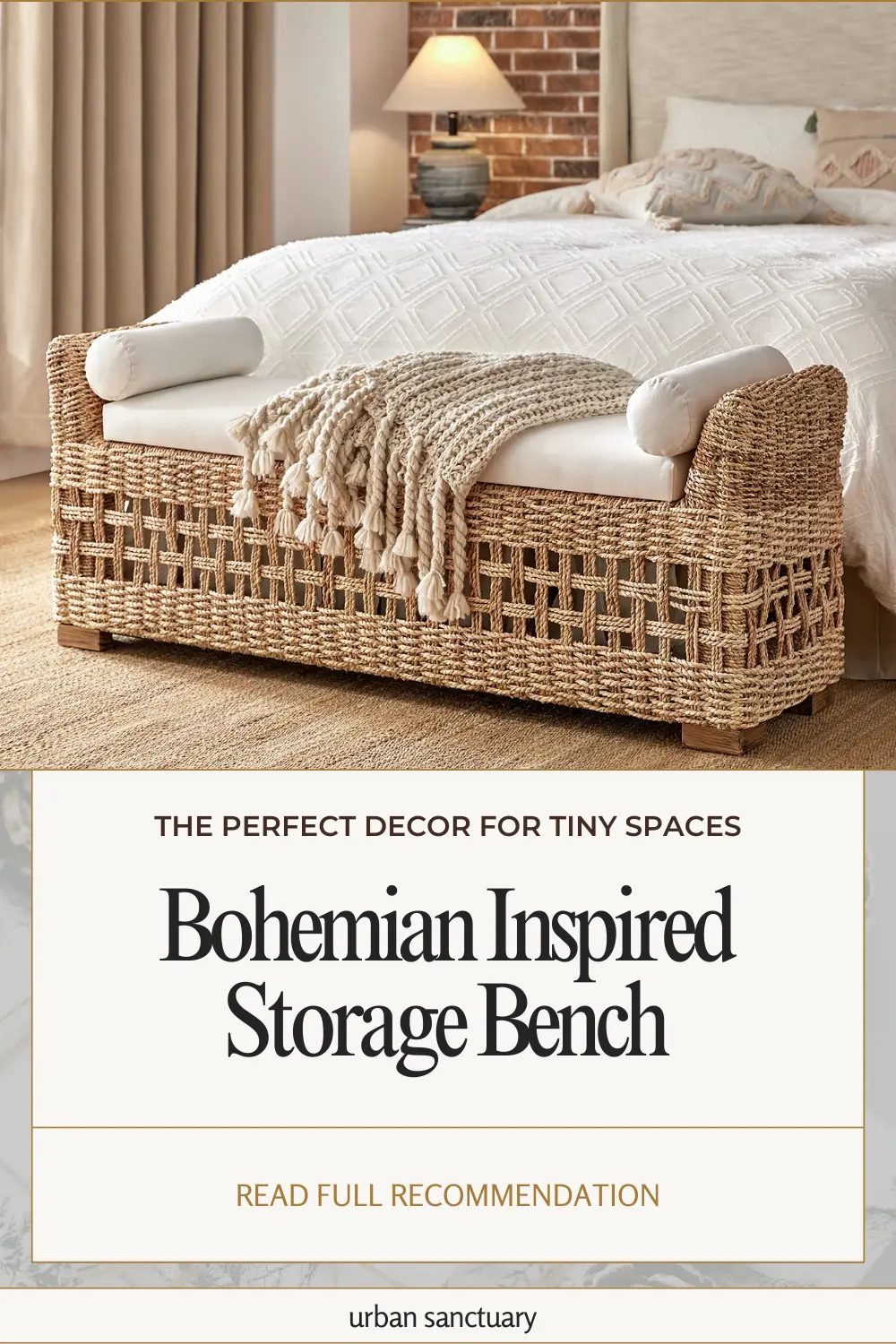
Storage benches bring practicality to a new level by transforming ordinary seating into cleverly disguised organizational solutions for modern homes. These unassuming pieces effortlessly bridge the gap between style and utility, making them indispensable additions to any capsule furniture collection.
Bench with Hidden Storage Functionality
Storage benches primarily serve as dual-purpose workhorses that provide comfortable seating while concealing a wealth of items beneath their lids. The flip-top design on most models reveals spacious compartments perfect for stashing:
- Seasonal items like blankets, winter gear, or summer accessories
- Entertainment essentials including board games and media
- Everyday clutter that would otherwise disrupt your living space
For families with children, storage benches offer safe access to toys without the finger-pinching risk of traditional toy boxes, as many feature soft-close hinges or drawer-style access. These thoughtful design elements ensure even young users can safely retrieve their belongings.
Bench with Hidden Storage Design Appeal
Modern storage benches have evolved beyond purely utilitarian designs. Today's options feature upholstered cushions in various fabrics from polyester blends to bouclé, velvet, and leather. Although minimalist styles dominate the market, you'll find everything from Craftsman-inspired solid wood pieces to industrial designs with metal legs and handles.
Materials significantly impact both appearance and durability. Premium models often combine upholstered seating with solid wood construction for lasting quality, coupled with elegant details like gun metal legs or antique-inspired finishes that elevate their visual appeal.
Best Placement for Bench with Hidden Storage
Entryways represent ideal locations for these versatile pieces, creating convenient spots to remove shoes while organizing footwear and accessories in the hidden compartment below. Coupled with wall hooks, this arrangement forms a complete organization station for busy households.
In bedrooms, placing a storage bench at the foot of the bed creates a sophisticated hotel-inspired look while providing discreet storage for extra bedding or off-season clothing. Similarly, in living spaces, these benches can replace traditional coffee tables or supplement seating arrangements, offering both style and substance to your capsule home furniture collection.
Conclusion
As we look toward 2025 and beyond, these seven essential capsule furniture pieces demonstrate how thoughtfully designed items can transform living spaces without sacrificing style or comfort. Though minimalist in approach, each piece delivers exceptional versatility—converting, extending, dividing, lifting, or nesting to meet your changing needs throughout the day.
The beauty of capsule furniture lies not only in its space-saving capabilities but also in its inherent adaptability. Rather than filling your home with single-purpose items that quickly become obsolete, these multifunctional pieces create a foundation for thoughtful living. Additionally, their timeless designs ensure they won't fall victim to passing trends, making them wise investments for years to come.
From the transformative nature of convertible sofa beds to the clever concealment of storage benches, each piece showcases how functionality and esthetics can coexist harmoniously. Most importantly, these versatile items allow you to maximize every square foot of your home while maintaining a cohesive, uncluttered environment.
Ultimately, embracing these double-duty furniture pieces means freeing yourself from the constraints of limited space. Whether you live in a compact apartment or simply wish to optimize your home's functionality, these seven capsule furniture essentials prove that with smart design choices, you never need to choose between form and function—you can absolutely have both.

